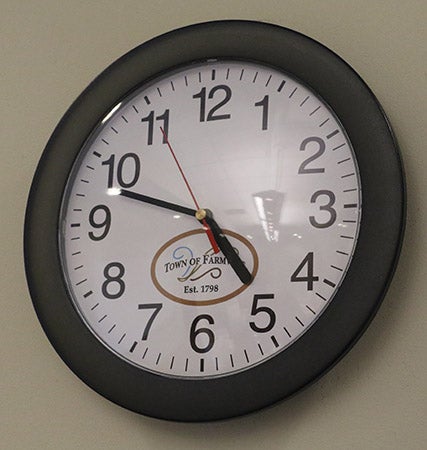Sunshine and shadows
Published 9:02 am Thursday, February 2, 2017
Groundhog Day is my favorite holiday. It marks the halfway point of winter and the turning toward spring, at least astronomically speaking.
During an annual cycle, each of the year’s four seasons begins at a specific moment relative to the relationship between the earth and the sun. There are two solstices, each associated with the year’s longest and shortest days and nights. Between them are two equinoxes when day and night have equal durations. In the northern hemisphere, winter officially begins with the solstice in December. Spring arrives with the March equinox.
Ancient Celtic, Druid and other northern European peoples identified the quarterly solar events as quarter days because they divided the year into four parts. Halving each of the quarters produced another series of observances called “cross-quarter” days. Whether by chance or by design, the early Christian observation of Candlemas coincided with the cross-quarter day at the beginning of February. This pairing of Candlemas, which falls on Feb. 2, with a nature-honoring festival marking the transition from winter to spring may have resulted in cultural cross-pollination that eventually led to the creation of Groundhog Day. Here’s a brief summary based on several (sometimes conflicting) accounts.
In describing the historical development of the observance, Pennsylvania’s Punxsutawney Groundhog Club quotes this old English song:
If Candlemas be fair and bright,
Come, Winter, have another flight;
If Candlemas brings clouds and rain,
Go Winter, and come not again.
A technical point apparently arose regarding the distinction between fair and cloudy. Eventually, the judgement was based on one’s ability to see a shadow. This, in turn, led to the identification of a specific shadow, that of a hedgehog. Hedgehogs were common in Britain and on the European continent. In a later century, when people emigrated from Germany to Pennsylvania, hedgehogs were nowhere to be found. Instead, the people discovered an ample supply of groundhogs, and Feb. 2 became Groundhog Day.
The Punxsutawney Spirit printed the first known newspaper account of a groundhog’s shadow in 1886 (it stated that the shadow had not been seen by press time). The first official Groundhog Day celebration in Punxsutawney was held the following year, in 1887. Since that early beginning, the Punxsutawney Groundhog Club has declared their groundhog, Phil, to be the nation’s official weather prognosticating groundhog.
The nation’s weather, however, has regional foibles. In some areas, Phil’s prominence has been challenged by local groundhogs. For example, the Howell Nature Center in Michigan is home to Woody, that state’s official groundhog. Closer to Farmville, Sir Walter Wally makes predictions from North Carolina’s Museum of Natural Sciences in Raleigh, and Chesapeake Chuck reports from the Virginia Living Museum in Newport News.
Weather lore holds if a groundhog sees its shadow on Groundhog Day, winter will persist for six more weeks. If the designated rodent fails to see its shadow, then spring is on the way.
Some people protest that the legend has it backwards, that sunny conditions and their associated shadows ought to herald an early spring. Climate scientists might actually agree.
They claim the groundhog’s method of predicting the arrival of spring is accurate less than half of the time (around 37 percent, depending on the specific study).
For me, those discussions miss the point entirely. I believe the groundhog’s real intentions are to encourage the weary and to restrain the unjustifiably zealous. By winter’s midway point, if the skies are gloomy and temperatures bitter, I need a reminder that spring is coming. On the other hand, if the day dawns bright and cheerful, I may need a reminder that winter still holds the ability to produce another punch.
Groundhog Day reminds me of the often-quoted proverb, “This, too, shall pass.” Although the origins of that saying are obscured in antiquity, many attribute it to a medieval Sufi poet who was asked by a king to devise a wise saying that would be fitting for all situations. I love groundhog weather forecasts because they, too, are always fitting. They encourage restraint when restraint is required, but they also offer hope on even the gloomiest of days.
Karen Bellenir has lived in Farmville since 2009, blogs for Pier Perspectives at PierPress.com and serves as editorial director for Wordwright LLC (www.Wordwrightllc.com). Her email address is kbellenir@wordwrightllc.com.



